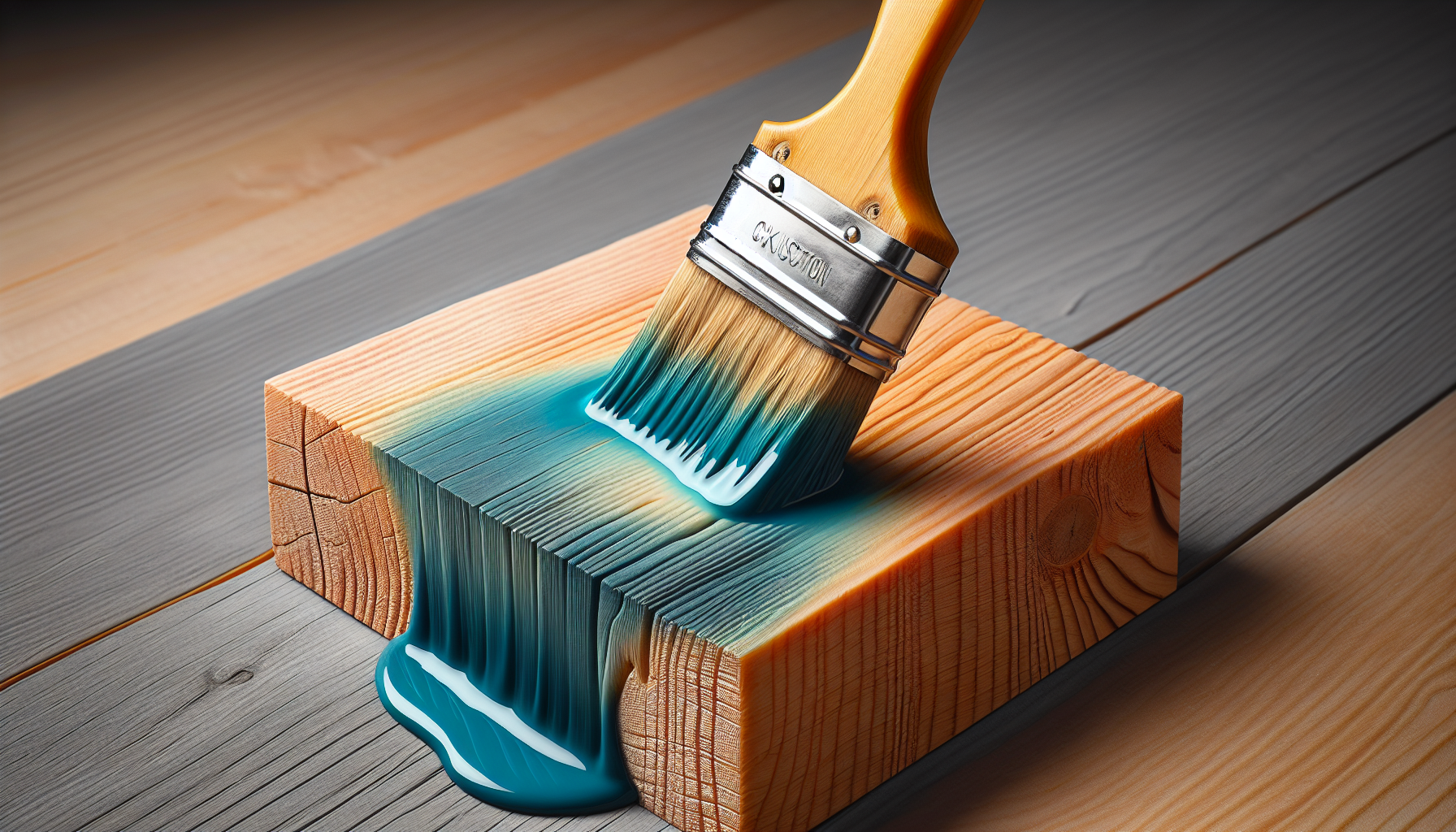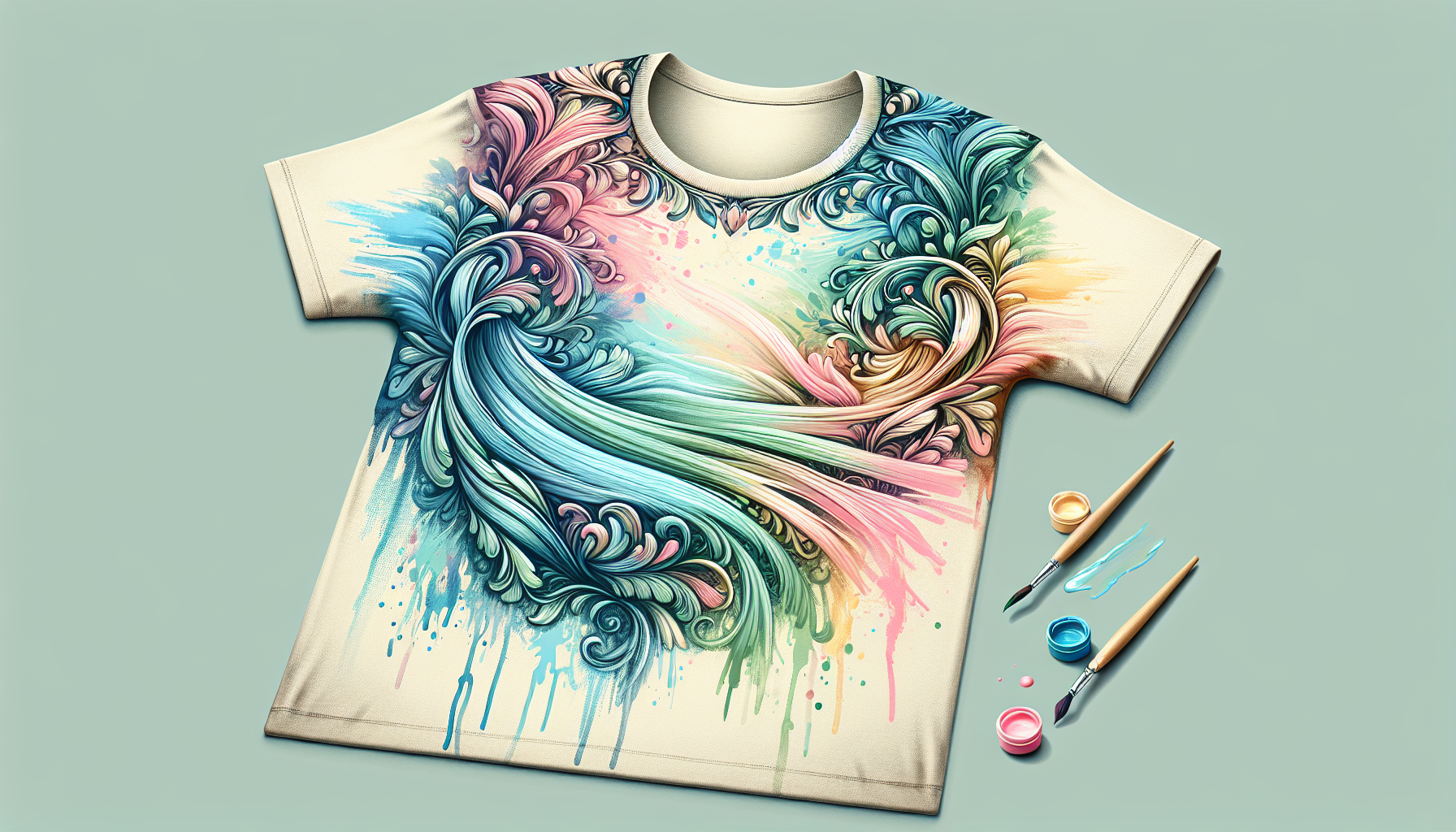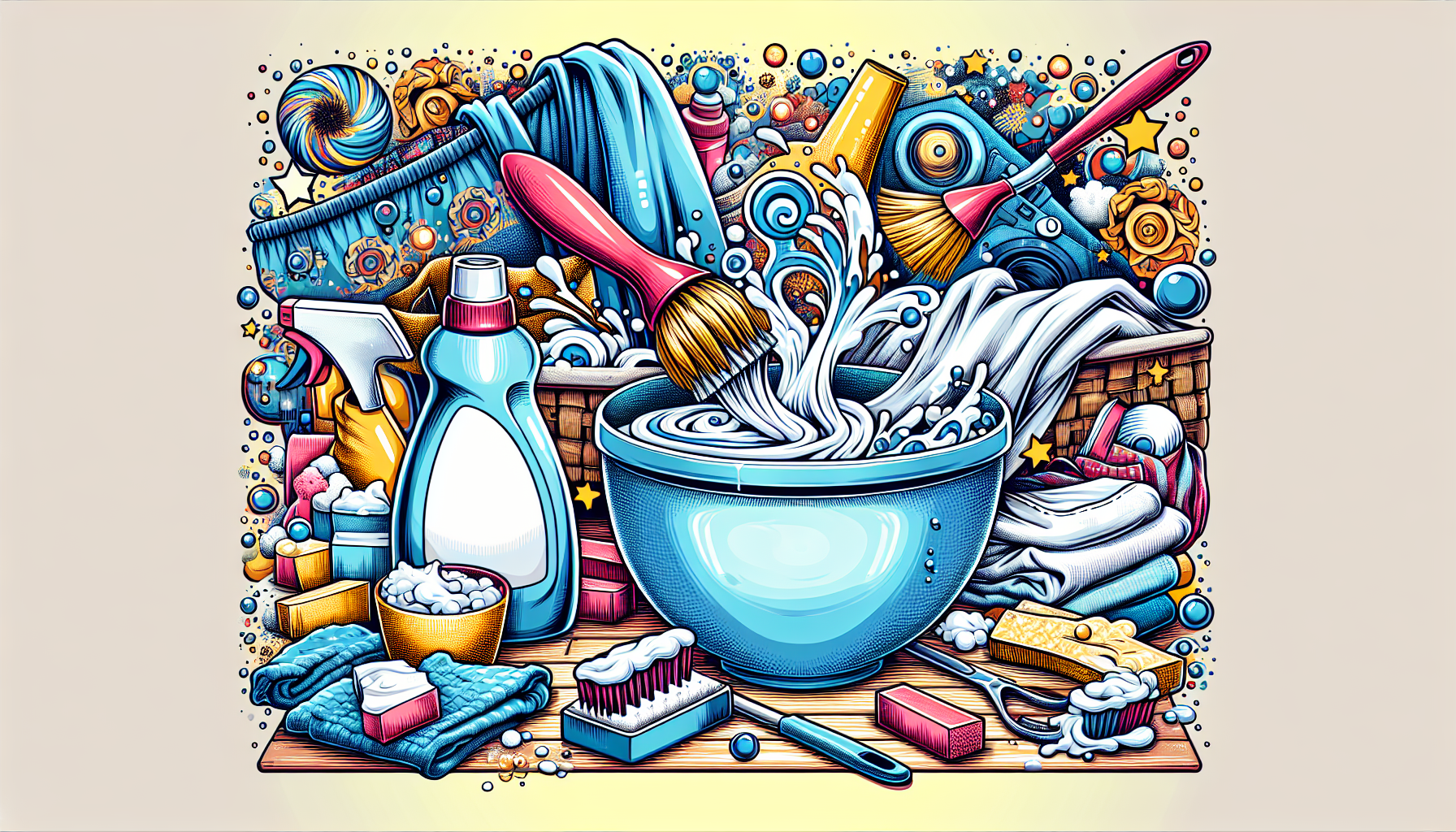Chalk paint has gained popularity for its matte and vintage finish, making it a go-to choice for many DIY enthusiasts. Whether you’re a professional painter or a hobbyist, keeping your chalk paint brushes clean is vital for achieving optimal results and preserving the longevity of your tools. In this article, you will discover effective techniques and tips on how to clean chalk paint brushes, ensuring they remain in top-notch condition and ready for your next creative project. Say goodbye to paint build-up and hello to beautifully clean brushes!
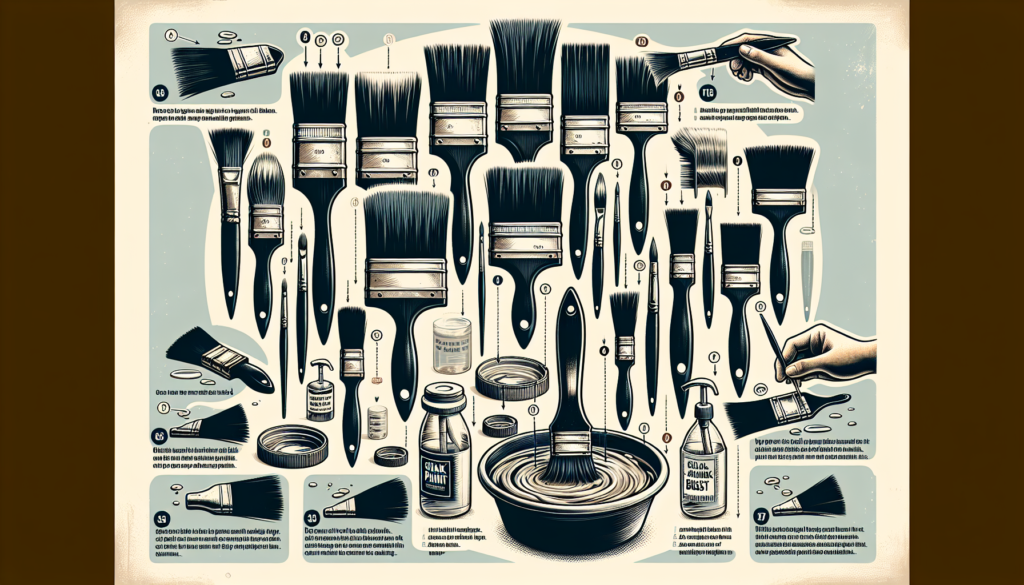
Preparation
Gather Necessary Materials
Before you start cleaning your chalk paint brushes, it’s important to gather all the necessary materials. This will ensure that you have everything you need at hand and the cleaning process will go smoothly. The materials you will need include:
- Paper towels
- Warm water
- Dish soap
- Vinegar
- Baking soda
- Hair conditioner
- Bowl or sink
- Wax paper or plastic wrap
Protect the Work Area
To avoid any mess or damage, it’s important to protect your work area before you start cleaning your chalk paint brushes. Lay down a plastic sheet or old newspapers to catch any drips or spills. This will make your cleaning process more convenient and prevent any accidental stains or damage to your work surface.
Removing Excess Paint
Scrape Off Excess Paint
The first step in cleaning your chalk paint brushes is to remove any excess paint from the bristles. Use a paint scraper or an old credit card to gently scrape off the dried or excess paint from the brush. Be careful not to apply too much pressure as it may damage the bristles or the brush itself.
Wipe Off with Paper Towels
After scraping off the excess paint, take a few sheets of paper towels and blot the brush bristles. Press the bristles gently against the paper towels to absorb any remaining paint. Repeat this process until the paper towels come out clean and there is no more paint transferring onto them.
Cleaning with Water and Soap
Fill a Bowl with Warm Water
To begin the cleaning process, fill a bowl or sink with warm water. The water should be warm, but not too hot, as hot water can damage the bristles of the brush. The bowl or sink should be large enough to comfortably soak the brush bristles.
Add Dish Soap to the Water
Once you have filled the bowl with warm water, add a few drops of dish soap to create a soapy solution. The dish soap will help to break down the paint and remove any remaining residue on the brush bristles.
Swirl the Brush in the Soapy Water
Take your chalk paint brush and gently swirl it in the soapy water. Make sure to fully immerse the bristles and allow the soapy water to penetrate the brush thoroughly. Use circular motions to work the soap into the bristles and loosen any paint that may be trapped in between.
Rinse the Brush under Running Water
After swirling the brush in the soapy water, rinse it under running water. Hold the brush under the faucet and let the water run through the bristles. Continue rinsing until the water runs clear and there are no traces of soap or paint coming out of the brush.
Optional Vinegar Soak
Prepare a Vinegar Solution
If you’re dealing with stubborn paint or dried-on residue, you can opt for a vinegar soak to help loosen it up. Prepare a vinegar solution by mixing equal parts vinegar and warm water in a bowl or sink. The vinegar acts as a natural solvent and helps break down the paint.
Soak the Brush in the Vinegar Solution
Once you have prepared the vinegar solution, place the chalk paint brush in the bowl or sink, ensuring that the bristles are fully submerged in the vinegar solution. Allow the brush to soak for about 30 minutes to an hour, depending on the severity of the paint buildup.
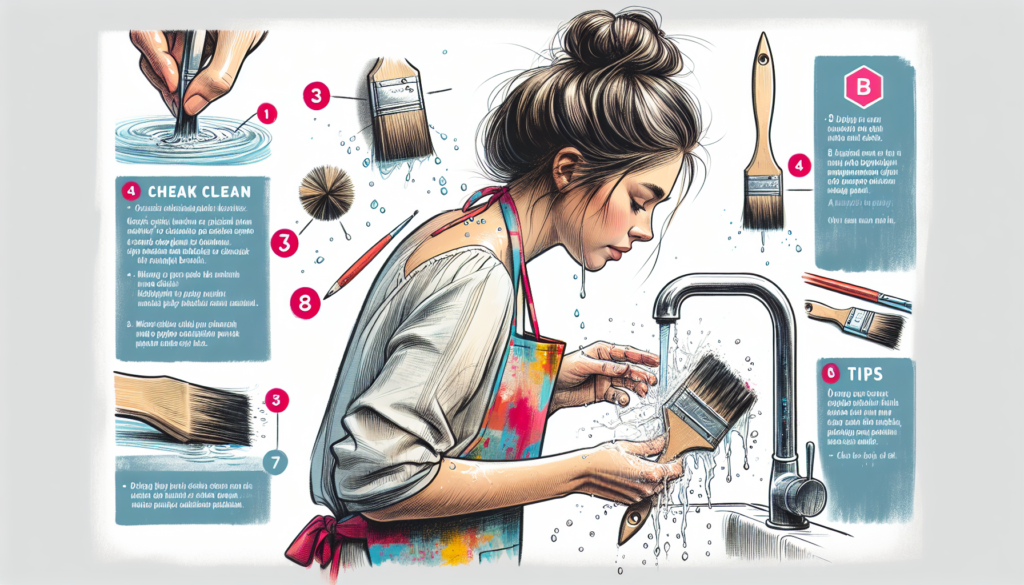
Removing Stubborn Paint
Create a Vinegar and Baking Soda Paste
For particularly stubborn paint on your chalk paint brush, you can create a paste using vinegar and baking soda. Mix equal parts vinegar and baking soda in a small bowl until it forms a thick, paste-like consistency.
Apply the Paste to the Brush Bristles
Take your chalk paint brush and apply the vinegar and baking soda paste directly to the bristles. Use your fingers or a brush to work the paste into the bristles, ensuring that it reaches all the nooks and crannies. Let the paste sit on the brush bristles for a few minutes to allow it to penetrate and loosen the stubborn paint.
Conditioning the Brush
Mix Hair Conditioner with Water
After removing the excess paint and cleaning the brush with water and soap, it’s important to condition the bristles to keep them soft and pliable. Mix a small amount of hair conditioner with water in a bowl or sink. The conditioner will help to moisturize and hydrate the bristles, preventing them from drying out.
Soak the Brush in the Mixture
Place the chalk paint brush in the bowl or sink with the hair conditioner and water mixture. Ensure that the bristles are fully submerged in the mixture and let it soak for about 10 to 15 minutes. This will allow the conditioner to penetrate the bristles and leave them soft and manageable.
Drying the Brush
Gently Squeeze Excess Water
Once you have finished cleaning and conditioning the brush, gently squeeze out any excess water from the bristles. Use your fingers to press down on the bristles, starting from the base and working your way towards the tips. Be careful not to twist or wring the bristles, as this can cause damage.
Reshape the Brush Bristles
To ensure that the brush maintains its proper shape and form, gently reshape the bristles with your fingers. Use your fingers to comb through the bristles and align them in the desired shape. Pay attention to any stray or bent bristles and gently guide them back into place.
Lay the Brush Flat to Dry
To allow the chalk paint brush to dry properly, lay it flat on a clean towel or paper towels. Make sure the bristles are facing upward and not touching any surfaces. This will prevent any moisture from seeping into the handle or causing the bristles to become misshapen. Allow the brush to air dry completely before storing or using it again.
Removing Stains from Wood Handles
Create a Baking Soda Paste
If you notice any stains or discoloration on the wood handles of your chalk paint brushes, you can easily remove them using a baking soda paste. Mix a small amount of baking soda with water to form a thick paste-like consistency.
Apply the Paste to the Stained Area
Take the baking soda paste and apply it directly to the stained area of the wood handle. Use a soft cloth or sponge to gently rub the paste onto the stain, working it in circular motions. Continue rubbing until the stain starts to fade away. Rinse off the paste with water and pat the wood handle dry with a clean towel.
Storing Chalk Paint Brushes
Clean and Dry the Brushes
Before storing your chalk paint brushes, it’s important to make sure they are clean and completely dry. Follow the cleaning and drying steps mentioned earlier to ensure that there is no residual paint or moisture left on the brush bristles.
Wrap Brushes in Wax Paper or Plastic Wrap
To protect the bristles and keep them in optimal condition, wrap the clean and dry chalk paint brushes in wax paper or plastic wrap. This will prevent any dust or debris from settling on the bristles and keep them safe from any potential damage. Make sure the wrap is secure and tightly sealed to keep the bristles intact.
Troubleshooting
Brush Bristles Are Stiff
If you find that your chalk paint brush bristles have become stiff or hardened after cleaning, it could be due to residual paint or improper drying. In such cases, repeat the cleaning process, paying extra attention to thoroughly rinse the brush and remove any remaining paint. Ensure that the brush is properly dried by following the drying steps mentioned earlier.
Residue or Paint Color Transfer
If you notice any residue or paint color transfer onto your chalk paint brushes, it may be an indication of a thorough cleaning issue. Make sure to follow each step of the cleaning process and rinse the brushes thoroughly under running water. Pay attention to any stubborn areas and use the vinegar and baking soda paste to remove any paint residue. Additionally, ensure that the brushes are completely dry before storing them to avoid any color transfer.
By following these steps and techniques, you can effectively clean your chalk paint brushes and keep them in optimal condition for future use. Proper cleaning and maintenance will not only prolong the lifespan of your brushes but also ensure the best results when using them for your chalk paint projects.

